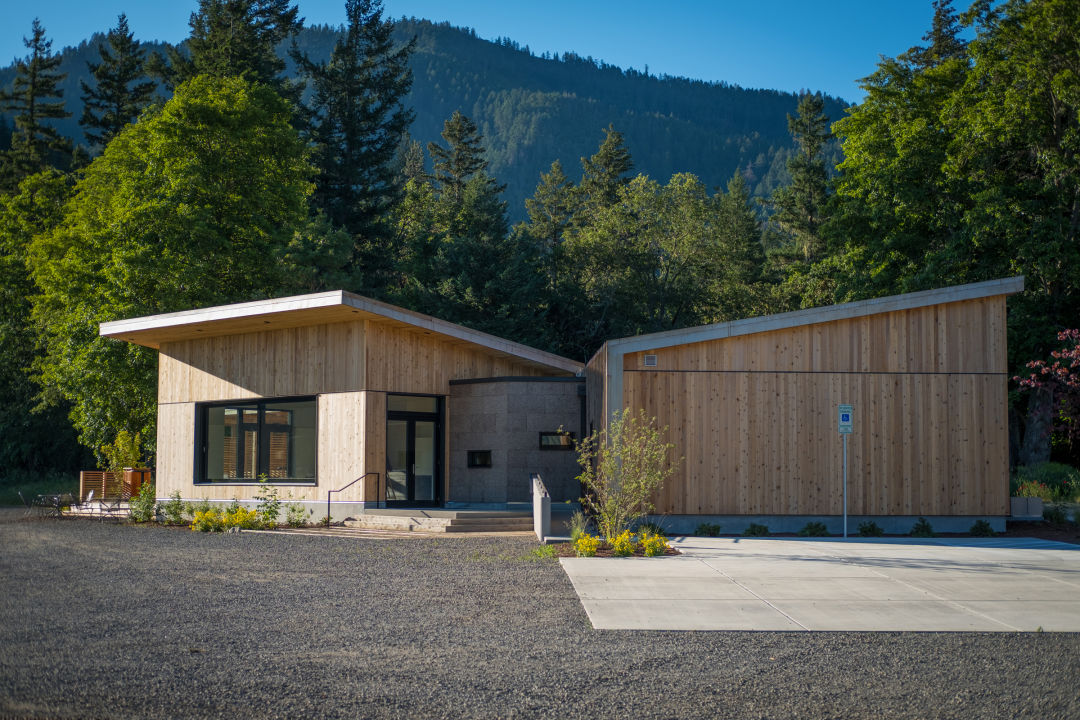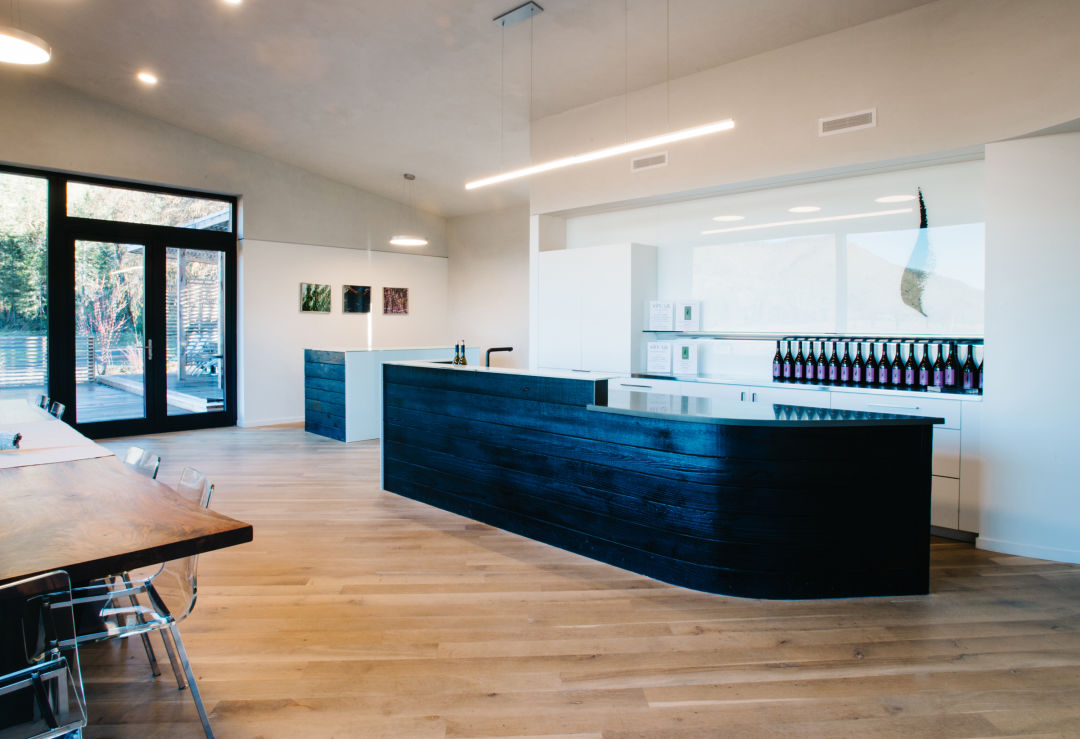Building a B Corporation

The Tasting Room at Cowhorn Vineyard & Garden, designed and built by Green Hammer, is the first winery in the world to achieve Living Building Challenge certification.
Image: Cowhorn Wines
Becoming a certified B Corporation is a very Oregon thing to do. Of the nearly 2,000 B Corps in the world, 85 are based in Oregon — a pretty huge number for a relatively small state. It’s not all that surprising, though, given Oregon’s environmental ethos (think Bottle Bill, strict land-use laws, and an aggressive Renewable Portfolio Standard requiring that 50 percent of the state’s electricity come from renewable resources by 2040).
Yet becoming a certified B Corporation is not all about protecting the environment. To get certified, a business must undergo a rigorous certification process led by third-party verifier, B Lab, in order to prove that it meets high standards for social and environmental performance, transparency, and accountability. Applicants must answer more than 250 questions about their commitment to occupational health and safety, civic engagement, local economic development and environmental sustainability. Given all the ways businesses and brands can connect with consumers in today’s digital world, why would a company do this?
“The term ‘green’ has been overused and washed out to the point where our intended meaning is less significant than when we started in 2002,” says Green Hammer founder and CEO, Stephen Aiguier. “Does ‘green’ mean that something is energy-efficient? Or that it’s free of toxic materials? Does ‘green’ mean that it’s recycled or reused? That it’s organic? All of the above? At Green Hammer, we’ve always been committed to certifying our buildings through third-party organizations because it provides transparency and clarity around what we mean when we say a building is ‘green.’ We felt it was important to undergo the same scrutiny when it comes to our business practices.”
Buildings account for 39 percent of carbon emissions in the United States. That’s why we’ve set a goal to build only projects that are net-zero-energy, or produce as much or more renewable energy than they consume,” Aiguier says. “Investing in net-zero-energy buildings will drastically cut carbon emissions while also saving our clients money in the long run.”

The Tasting Room at Cowhorn Vineyard & Garden is designed to produce more energy than it consumes.
Image: Claire Thorington
In 2015, Green Hammer completed Ankeny Row, a net zero energy community in southeast Portland consisting of five three-bedroom townhomes and one two-bedroom apartment above a common shared space. Built to the Passive House standard, Ankeny Row produced 18 percent more electricity than it consumed after one full year of operation.
Green Hammer also envisions a future where every building supports a healthy ecosystem. That’s why it’s committed to eliminating toxic chemicals from its buildings. The U.S. Environmental Protection Agency has identified more than 16,000 chemicals as 'chemicals of concern'. Only a very small fraction of those chemicals are subject to mandatory testing, making it easy for manufacturers to use them in building materials such as carpets, drywall, windows, and paint. “Eliminating harmful toxics from buildings is a difficult and yet paramount pursuit toward a healthy world,” Aiguier says.
Green Hammer sees the Living Building Challenge (LBC) as the way to do this (in many ways, LBC is the B Corp certification of the building industry). The LBC challenges builders to eliminate “Red Listed” ingredients such as PVC, flame-retardants, bisphenol A (BPA), and heavy metals — all of which are known to be harmful to human health and the environment yet are common in the building industry. On the heels of its B Corp certification, Green Hammer was notified that its latest net-zero-energy project, the Tasting Room at Cowhorn Vineyard & Garden, achieved Living Building Challenge Petal certification. In doing so, it became the world’s first winery and the fourth building in Oregon to achieve what’s regarded internationally as the most stringent green building standard.
“For more than 10 years, we’ve been working hard to build a company culture that is not about ‘doing less bad’ but rather about ‘doing the most good’. The B Assessment helped us create benchmarks for every single area of our business operations,” Aiguier says. “We absolutely know we’ll be more competitive and see higher staff retention if we make business choices that are good for the environment, good for people, and overall good for the global community.”
Based in Portland, Oregon, Green Hammer has more than 20 employees in Portland and Southern Oregon. In June 2017, Green Hammer joined more than 1,000 U.S. governors, mayors, businesses, investors, colleges and universities by signing an open letter to the international community and parties to the Paris Agreement declaring their intent to help ensure the U.S. remains a global leader in reducing carbon emissions. The Portland design-build firm brings more than a decade of experience helping people create healthy and inspiring buildings. Learn more at www.greenhammer.com.
